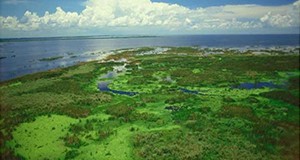During the summer, many of Florida's nutrient-enriched lakes and reservoirs experience proliferations of cyanobacteria commonly called “blooms.”. Cyanobacteria are natural in Florida lakes and reservoirs, but when they grow to high levels and bloom, they become a big problem. They look awful, smell bad, and can poison fish and other animals in the water. To help resource managers considering costly remediation projects or evaluating the effectiveness of nutrient reduction strategies to manage the problem, this 7-page fact sheet presents the results from 15 years of studies observing three large, nutrient-rich lakes in Florida (Lake Harris, Lake George, and Lake Okeechobee) to study the relationship between rainfall and cyanobacteria blooms and learn causes of year-to-year bloom variability. Written by Karl E. Havens, Mark V. Hoyer, and Edward J. Phlips and published by the Florida Sea Grant College Program
http://edis.ifas.ufl.edu/sg142
Tag: Volusia County
FE791 The Economic Impact of Agriculture and Natural Resources in Volusia County, Florida
FE791, a 17-page report by Rodney L. Clouser, Mohammad Rahmani, and David Mulkey, provides a profile of agriculture and natural resource industries and an overview of their economic impacts in Volusia County, Florida. It is based on data from the IMPLAN Pro database for Florida counties for 2006, the 2002 Census of Agriculture, and the Volusia County Property Appraiser. Includes references. Published by the UF Department of Food and Resource Economics, February 2009.
http://edis.ifas.ufl.edu/FE791
